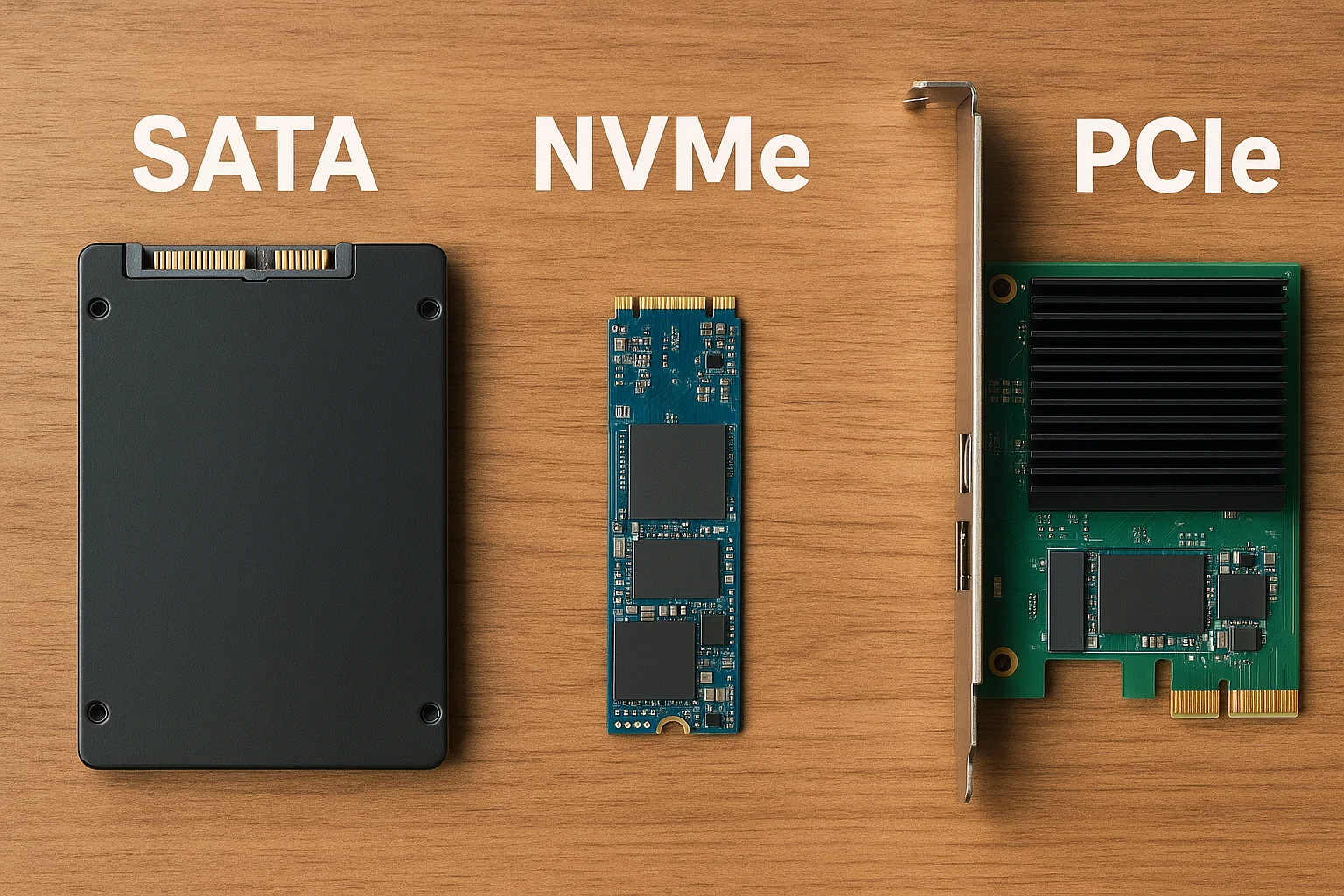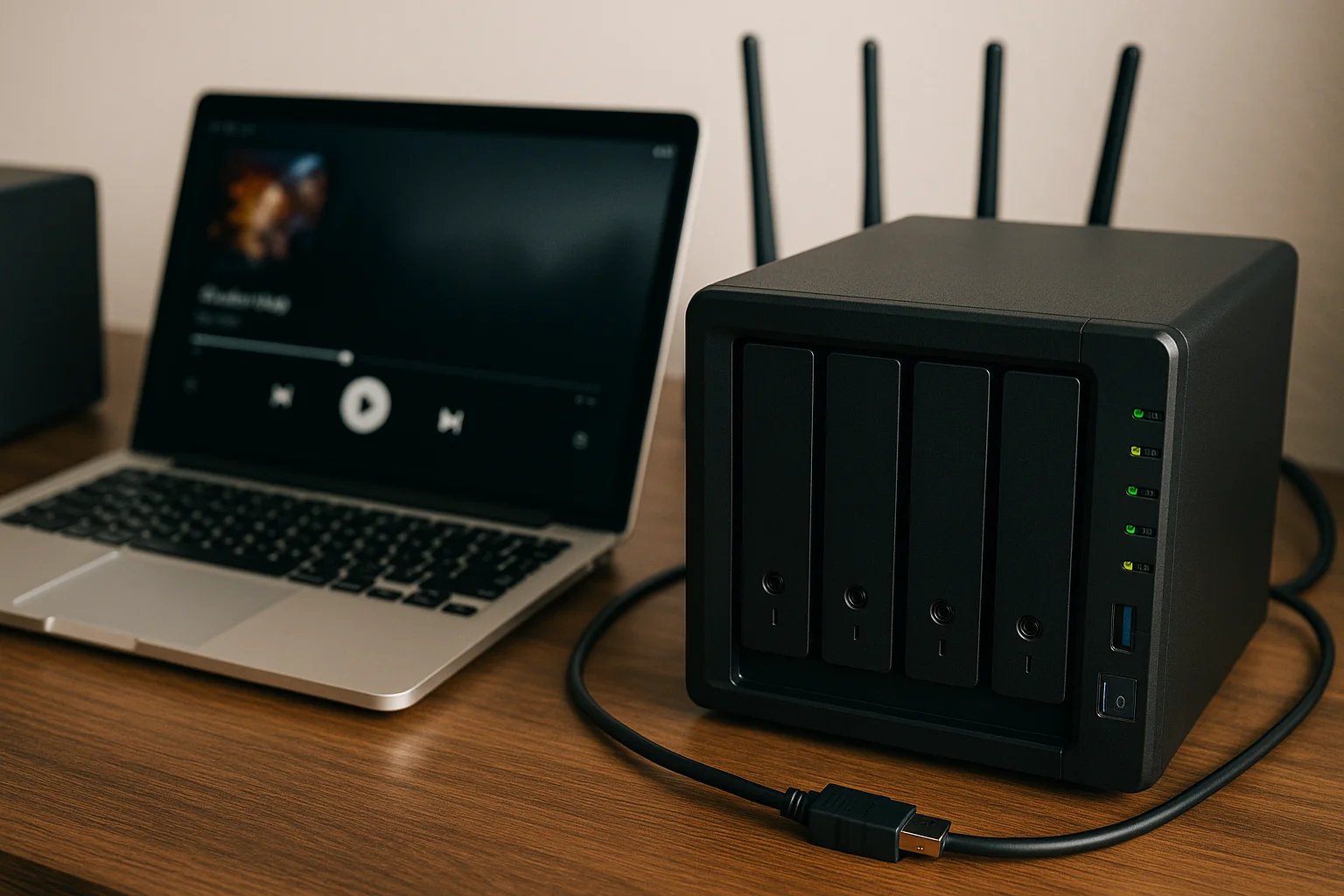Speed Comparison: SATA vs PCIe vs NVMe
When evaluating storage performance, one of the most critical metrics is data transfer speed, usually measured in megabytes per second (MB/s) or gigabytes per second (GB/s). The interface and protocol used by a storage device greatly influence these speeds.
SATA III (the latest standard) has a maximum theoretical bandwidth of 6 Gbps, which translates to about 550–600 MB/s in real-world sequential read/write speeds. This is a limitation of the SATA interface itself, regardless of the SSD’s capabilities.
On the other hand, PCIe (Peripheral Component Interconnect Express) is a high-speed interface that allows for significantly faster data transfers. Its speed depends on both the generation (e.g., PCIe 3.0, 4.0, or 5.0) and the number of lanes used (x2, x4, etc.).
- PCIe 3.0 x4: up to 4 GB/s
- PCIe 4.0 x4: up to 8 GB/s
- PCIe 5.0 x4: up to 16 GB/s
NVMe (Non-Volatile Memory Express) is a protocol designed specifically for SSDs over PCIe, allowing them to fully utilize these higher speeds. A typical NVMe SSD using PCIe 3.0 x4 can reach up to 3,500 MB/s read speeds and up to 3,000 MB/s write speeds. With PCIe 4.0, these numbers can go even higher, reaching 7,000 MB/s and beyond.
Another key factor in performance is input/output operations per second (IOPS). NVMe SSDs significantly outperform SATA drives here as well, with hundreds of thousands of IOPS compared to SATA SSDs, which are generally limited to tens of thousands. This makes a noticeable difference in tasks involving many small files or random read/write operations, such as loading applications or booting an OS.
To put things into perspective:
| Technology | Max Bandwidth | Typical Read/Write Speeds | Typical IOPS |
|---|---|---|---|
| SATA III | 6 Gbps (~600 MB/s) | 500–550 MB/s | 75,000–100,000 |
| PCIe 3.0 x4 (NVMe) | 32 Gbps (~4 GB/s) | 2,500–3,500 MB/s | 400,000–600,000 |
| PCIe 4.0 x4 (NVMe) | 64 Gbps (~8 GB/s) | 5,000–7,000 MB/s | Up to 1,000,000 |
| PCIe 5.0 x4 (NVMe) | 128 Gbps (~16 GB/s) | Over 10,000 MB/s | 1,200,000+ |
It's important to note that these figures represent peak performance under ideal conditions. Actual performance can vary based on the specific drive model, system configuration, and workload type.
Form Factors: M.2, U.2, and Add-In Cards
Storage devices that use modern interfaces like SATA or PCIe come in different form factors, which define their physical shape, size, and connector type. These form factors are important for compatibility with your motherboard, case layout, and cooling setup.
M.2 is the most common form factor for modern SSDs. It resembles a slim stick of gum and connects directly to the motherboard via an M.2 slot. M.2 supports both SATA and NVMe protocols, so it's important to know which type you're installing. While they may look identical, a M.2 SATA SSD offers SATA-level performance, whereas a M.2 NVMe SSD can leverage PCIe lanes for much faster speeds.
M.2 drives come in various lengths, such as 2242, 2260, 2280, and 22110—these numbers refer to width (22mm) and length (e.g., 80mm). The most common size is 2280. Not all motherboards support all lengths, so always check your motherboard specifications before buying.
U.2 is a less common but enterprise-grade form factor, primarily used in servers or high-performance workstations. It connects via a cable and looks similar to a 2.5-inch SATA SSD but supports NVMe over PCIe. U.2 drives offer hot-swappability and better thermals thanks to their larger size and metal casing. While rare in consumer desktops, some high-end motherboards or expansion cards provide U.2 ports.
Add-In Cards (AIC) are full-sized PCIe expansion cards that plug directly into a motherboard’s PCIe slot. These are typically used for high-performance NVMe SSDs—especially those that exceed the power or thermal limits of M.2 slots. Some AICs feature passive or active cooling systems, and they may even support multiple SSDs in RAID configuration. This makes them a solid choice for heavy workloads like 4K/8K video editing, scientific computing, or large-scale data processing.
One notable advantage of AICs is that they bypass M.2 slot limitations in terms of space and cooling. However, they occupy a full PCIe slot, which may be a limitation in compact builds or when other expansion cards (like GPUs or sound cards) are already installed.
Here's a quick overview of these form factors:
| Form Factor | Protocol Support | Connection Type | Typical Use Case |
|---|---|---|---|
| M.2 | SATA or NVMe (PCIe) | Direct to motherboard slot | Consumer desktops, laptops |
| U.2 | NVMe (PCIe) | Cable to U.2 port | Enterprise servers, workstations |
| Add-In Card (AIC) | NVMe (PCIe) | PCIe x4/x8/x16 slot | High-performance desktops, professional workloads |
Choosing the right form factor depends on your hardware compatibility, cooling requirements, and performance goals. While M.2 dominates consumer markets due to its compact size, U.2 and AICs are favored in environments that demand reliability, sustained performance, or better heat dissipation.
Compatibility and System Requirements
Before choosing a storage drive, it’s crucial to ensure that your system supports the interface, protocol, and form factor of the device. Incompatibility can result in limited performance—or in some cases, the drive not being recognized at all.
Motherboard support is the first aspect to check. Most modern motherboards include at least one M.2 slot, but not all M.2 slots support NVMe. Some are wired only for SATA signals. Carefully review your motherboard’s manual or specifications to identify which standards each slot supports.
In addition to slot type, you should verify the number of available PCIe lanes. High-performance NVMe SSDs, especially those using PCIe 4.0 or 5.0, require dedicated PCIe lanes (usually x4) to operate at full speed. If multiple devices are connected (e.g., GPU, capture card, NVMe SSD), lane-sharing may occur and throttle performance.
For Add-In Cards (AICs), your motherboard must have a free PCIe slot of the correct size (usually x4, x8, or x16) and enough physical clearance in the case. Some AICs also require a UEFI BIOS update or support for booting from NVMe in the firmware settings.
If you’re considering a U.2 drive, check whether your motherboard includes a U.2 port. If not, you may need a U.2 to M.2 or U.2 to PCIe adapter. U.2 drives also draw power differently—through the U.2 connector or via a separate cable—so power supply compatibility must be taken into account as well.
Laptop compatibility is more restrictive. Most laptops with SSD support use the M.2 form factor, but space is limited and thermal management is less robust. It's important to ensure the drive fits the available slot (e.g., 2280 length) and doesn't exceed thermal or power limits of the system.
On the software side, operating system support matters too. All modern OSes like Windows 10/11, macOS, and Linux distributions support NVMe, but older systems (e.g., Windows 7 or early Linux kernels) may lack native drivers or boot support for NVMe drives. Some BIOS/UEFI firmware may also require updates to enable booting from NVMe or recognizing drives over PCIe.
Finally, some advanced features such as booting from RAID arrays using NVMe, hot-swapping U.2 drives, or utilizing hardware-level encryption require chipset-specific support or enabling certain options in BIOS/UEFI (like AHCI/RAID modes or Secure Boot configurations).
Here are a few key system requirements to double-check before installation:
- Type and version of M.2, PCIe, or U.2 interface on the motherboard
- Number of available PCIe lanes and their allocation
- Form factor compatibility (length, slot size, clearance)
- Power delivery capacity (especially for U.2 and AICs)
- Firmware (BIOS/UEFI) support for NVMe or advanced boot features
- Operating system driver support for your chosen protocol
Ensuring compatibility across all these layers—hardware, firmware, and software—will help you take full advantage of your storage device's capabilities.






